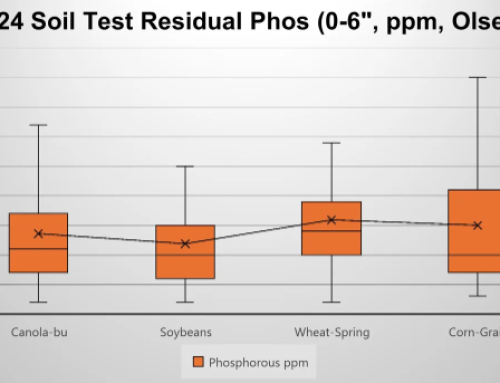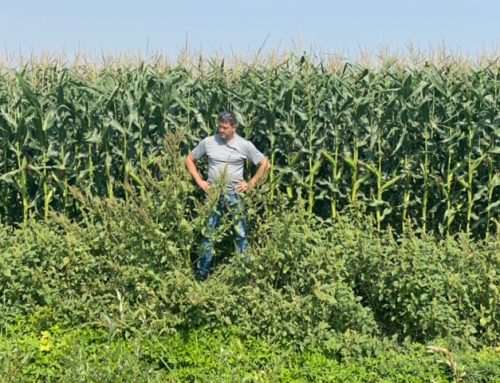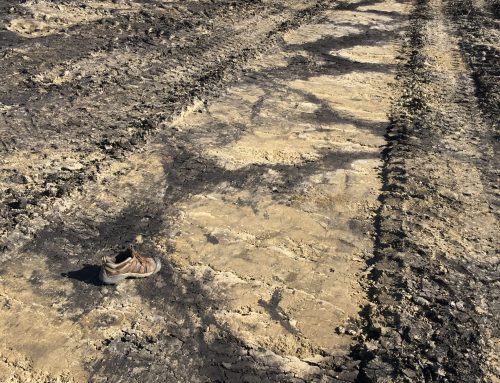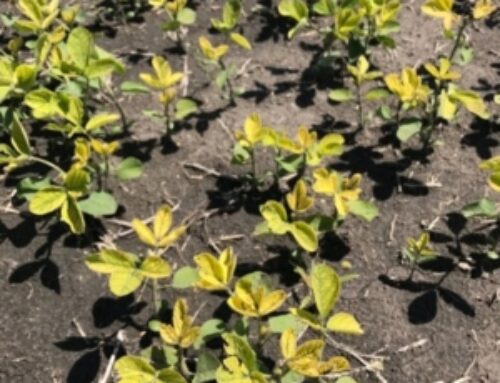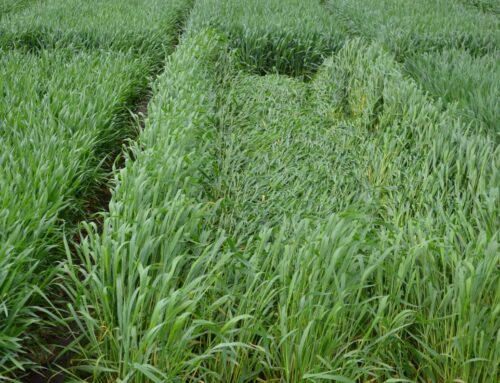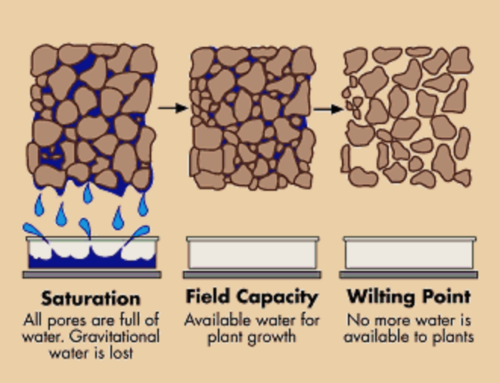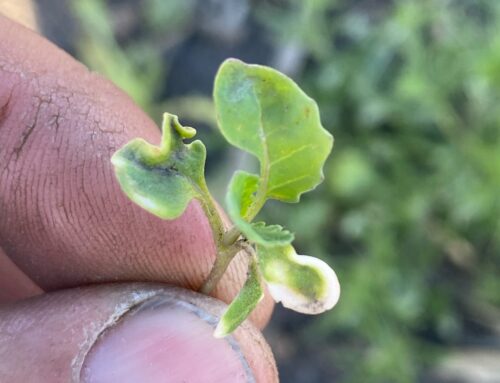Conducting field scale trials is not new. When we look back on the history of farm trials, most producers will remember a sales rep coming to their farm and offering a jug of this or a jug of that try on a few acres. There wasn’t anything complicated about it. The producer would throw the product into their sprayer and treat however many acres the jug recommended for best results. There was no predetermined plan where the trial would be placed in the field, no data collected during the season, nor was there a plan for harvest. The sales rep would hope that the producer was patient enough to harvest those parts of the field separately, weigh off both treatments and report back with results. Unfortunately, even if the treatments are properly weighed, there are too many variables that can affect a simple side by side trial giving us little, if any, confidence that our results are true.
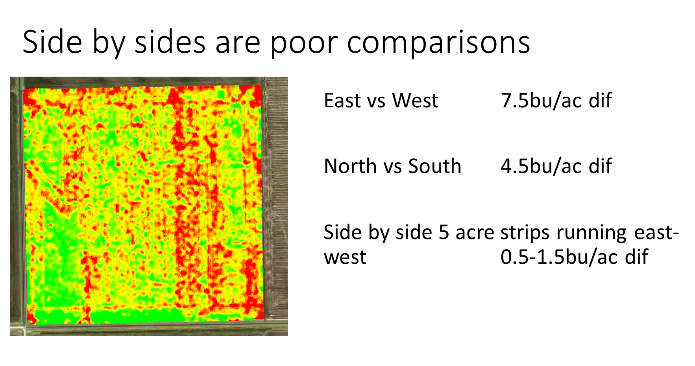
One of the most important steps to planning a trial is its location. From yield data, we know that there could exist significant variability between the north and south or east and west sides of a field. These differences can be natural (topography, soil texture) or man made (cropping or fertilizer history, erosion, etc). Without even adding a treatment to a part of the field, one side could naturally yield better than the other, regardless of everything else.
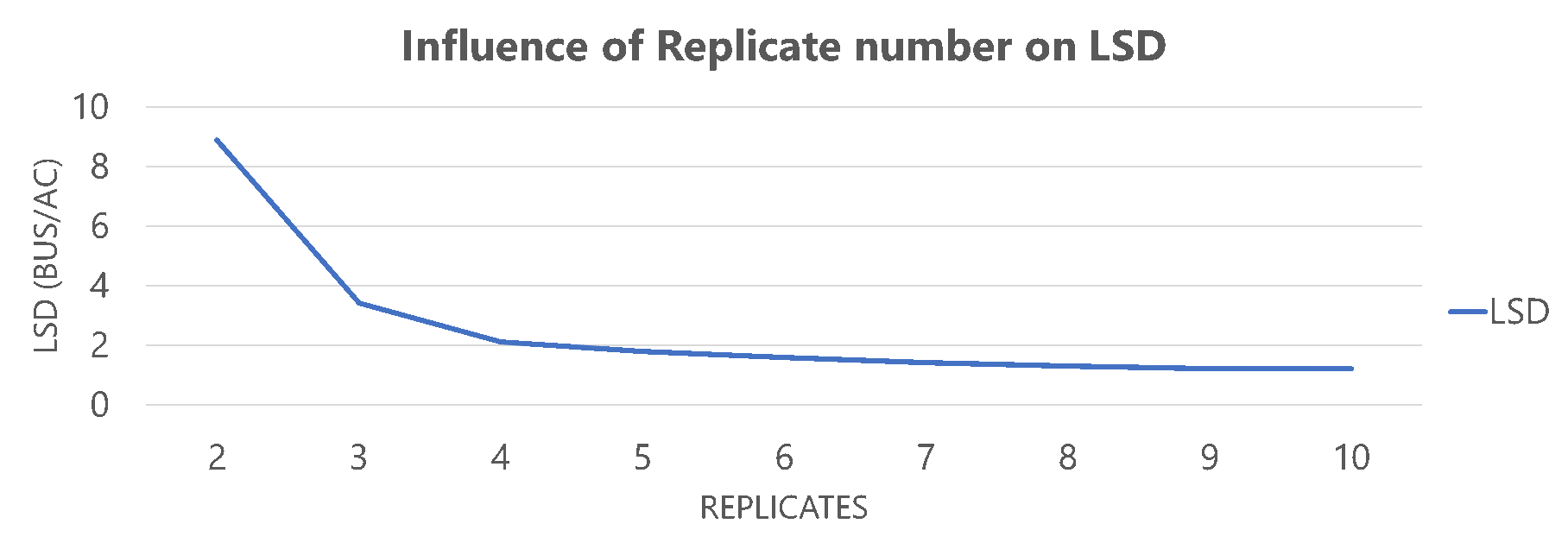
To address this variability, we add replicates to give us additional confidence that the results we are seeing are true. The more replicates we add, the more confidence we can have in the results. There are also naturally occurring events during a growing season that can affect results (hail, thunderstorms with damaging winds, insects, disease, etc.), making it challenging for all areas of a trial will successfully make it to harvest. In a traditional side-by-side trial, if half the field is decimated by hail, then you’ve potentially lost your trial, as you no longer have anything to compare. When we look at how the results hold up during statistical analysis, we need to have a least three replicates to be considered scientifically sound data.
Our on-farm trials are replicated a minimum of four times, with a preference towards six. This may sound like a lot, however the number of replicates that have some sort of “accident” affect them during the season, we typically finish harvest with four or five reps. Also, since we’re collecting such large sample sizes per treatments, our confidence level increases in the statistics.
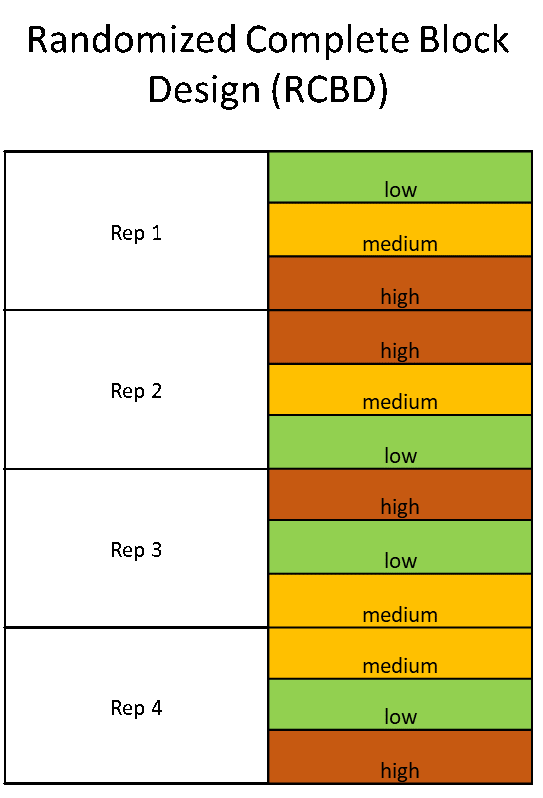
To further increase confidence in our results we use different trial layout designs, depending on the number of treatments, such as alternating strips, paired T or randomized complete block design (RCBD) to fairly examine the treatments being applied. We also know that the direction the field ditches run can affect the yield in certain areas of the field, so we’re best to have our treatment strips running perpendicular rather than parallel to ditches. Our ability to capture the variability of a field will increase the confidence we have in our results
When faced with all the planning that goes into a scientifically replicated trial, there’s no doubt some farmers would shy away form the time commitment during seeding/spraying and harvest, which are very intense and high stress times of the year. We know that a lot needs to happen during a very short window of time, especially when the meteorologist is calling for bad weather. We, therefore, make sure that every trial has been pre-planned with the producer so all people involved know the desired outcome, what time constraints will be added and where the trial will be located in the field.
Getting trustworthy data from your field trials is invaluable to your operation. This benefit can be overshadowed when trials haven’t been properly organized prior to implementation. When all the planning happens in the off season, hosting a multi-replicate trial becomes less daunting, stress levels are often reduced, better data is collected, and we become excited for the results. It’s a win-win situation for everyone!
I’d like to hear about the on-farm trials you’ve done on your farm, so leave the me a comment and we can connect.

